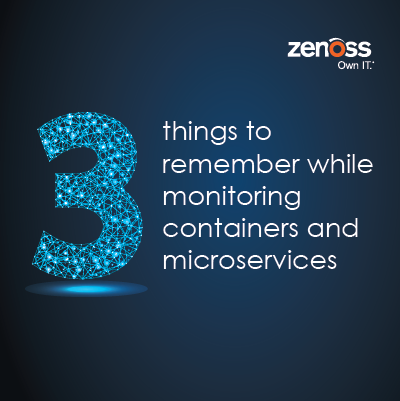
Use Machine Learning and Analytics to Simplify Container Monitoring
One of the biggest challenges rolling out new applications is testing them in isolation without impacting the production environment. Docker helps developers run applications in isolated environments and test against multiple previous versions for rapid iteration — scaling horizontally by reusing containers. But iteration creates more complexity in monitoring as additional data is generated in the system. With AIOps, you can automate and enhance the use of machine learning and analytics to leverage data emanating from these microservices. You can contextualize the wave of data, remove the guesswork, and proactively identify issues even before they lead to downtime or service degradation.
Make Sure Ingestion of Container Metrics is Seamless
Monitoring several containers can be simplified using tags, which allow you to track specific metrics, including memory, CPU, network and I/O by creating a logical blueprint of your application architecture. But simply aggregating all that data won’t give you the complete visibility you need to solve any issues. DevOps teams need automated discovery that builds real-time IT service models to keep up with the dynamic nature of the containers. With software-defined IT operations tools, you can gather custom metrics using collectd and statsd agents and get insight into poorly performing microservices to understand implications on applications.
Use the Right Tools for Troubleshooting
The ephemeral nature of containers helps DevOps teams to rapidly deploy and iterate faster, but monitoring and troubleshooting them is challenging. You need tools with the ability to capture every single system call on a host, give deep visibility into how any application, container, host or network performs, and interface with the orchestration master. This not only allows you to collect machine data but also provides the ability to capture context of the distributed system.
With Zenoss’ container monitoring capabilities, you can easily get contextual insights from your dynamic IT infrastructure. You can seamlessly discover and monitor containers and microservices in real time along with your traditional IT infrastructure. Zenoss simplifies and automates agent-based discovery and builds a real-time model to ease the dynamic nature of containers. It allows you to have complete visibility over all components and its service dependencies. Zenoss utilizes ZenPacks — plug-ins that provide support for monitoring Docker, Kubernetes, GKE. Their capabilities include discovery and periodic remodeling of containers, optional status and performance monitoring.
For more information about Zenoss, including a demonstration of the container monitoring capabilities of Zenoss Cloud, click here to watch a replay of our webinar.






